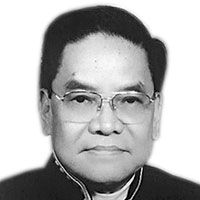Stem cells for heart disease

December 22, 2002 | 12:00am
Stem cell therapy may be a new paradigm for the treatment of heart disease patients. New tissue culture techniques are getting closer to growing cardiac muscle from stem cells, which are then grafted into infracted myocardium to create new areas of functional tissue. Whether (and to what extent) such tissue will integrate functionally and electrically with surrounding cardiac muscle remains to be determined but preliminary work in animals is very promising. Direct local transplantation of stem cells could also be a useful strategy for therapeutic neovascularization in ischemic tissue. After a heart attack patients could undergo a stem cell transplant to grow new blood vessels at the site of infarct, in essence allowing patients to grow their own coronary bypasses. Cord blood stem cells are particularly attractive because of their immaturity, which is seen in their longer telomeres. Telomeres are the DNA base pair repeats that exist at the end of all human chromosomes and protect them from degradation, fusion and recommendation. With each cell division, the telomeres gradually shorten until they reach a critical length and the cell loses its ability to divide. Mature cells, including stem cells from bone marrow and peripheral blood, have short telomeres, which greatly reduce their ability to proliferate. Reduced numbers of mature lymphocytes are an additional advantage of cord blood stem cells’ immunologic immaturity and one advantage that reduce the likelihood of graft vs host disease.
Stem cells harvested at birth from a patient’s umbilical cord could be stored and then reintroduced in the patient at a later date, therapy taking advantage of the immaturity and vitality of the "infant" cells and avoiding the complications of allograft transplant rejection. A potential new therapeutic approach is to increase the functions myocytes within an area of infracted myocardium by implantation of myogenic cells. Fetal cardiomyocytes introduced into animals have been shown to survive and differentiate in infracted tissue improving cardiac performance.
Umbilical cord blood stem cells were recently shown to have a vascular endothelial grown factor receptor on their cell surfaces, suggesting that they may be able to differentiate into progenitor endothelial cells of possibly even cardiac cells. Endothelial cell progenitors have also been isolated from human peripheral blood and may be useful for augmenting collateral vessel growth to ischemic tissues and instituting therapeutic angiogenesis. Bone marrow stem cells are also being explored for their potential ability to regenerate infracted myocardium. Locally derived bone marrow cells have the ability to generate de novo myocardium, potentially ameliorating the outcome of coronary artery disease. In addition, neovascularization was observed. This new form of repair could improve the immediate and long-term outcome of ischemic heart disease. Injection of bone marrow stem cells has been shown in animals to improve regional blood flow and cardiac function. In mice, bone marrow stem cells migrated to the site of ischemic damage and then differentiated into cardiomyocytes and endothelial cells that contributed to the formation of functional tissue. These findings support the development diversity of hematopoletic stem cells and suggest that their functional role may be largely determined by their microenvironment.
Stem cells harvested at birth from a patient’s umbilical cord could be stored and then reintroduced in the patient at a later date, therapy taking advantage of the immaturity and vitality of the "infant" cells and avoiding the complications of allograft transplant rejection. A potential new therapeutic approach is to increase the functions myocytes within an area of infracted myocardium by implantation of myogenic cells. Fetal cardiomyocytes introduced into animals have been shown to survive and differentiate in infracted tissue improving cardiac performance.
Umbilical cord blood stem cells were recently shown to have a vascular endothelial grown factor receptor on their cell surfaces, suggesting that they may be able to differentiate into progenitor endothelial cells of possibly even cardiac cells. Endothelial cell progenitors have also been isolated from human peripheral blood and may be useful for augmenting collateral vessel growth to ischemic tissues and instituting therapeutic angiogenesis. Bone marrow stem cells are also being explored for their potential ability to regenerate infracted myocardium. Locally derived bone marrow cells have the ability to generate de novo myocardium, potentially ameliorating the outcome of coronary artery disease. In addition, neovascularization was observed. This new form of repair could improve the immediate and long-term outcome of ischemic heart disease. Injection of bone marrow stem cells has been shown in animals to improve regional blood flow and cardiac function. In mice, bone marrow stem cells migrated to the site of ischemic damage and then differentiated into cardiomyocytes and endothelial cells that contributed to the formation of functional tissue. These findings support the development diversity of hematopoletic stem cells and suggest that their functional role may be largely determined by their microenvironment.
BrandSpace Articles
<
>
- Latest
- Trending
Trending
Latest
Trending

By BABE’S EYE VIEW FROM WASHINGTON D.C. | By Ambassador B. Romualdez | 1 day ago

By FIRST PERSON | By Alex Magno | 2 days ago
Latest
Recommended

February 17, 2025 - 12:00am

























